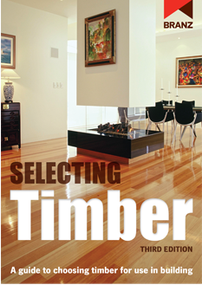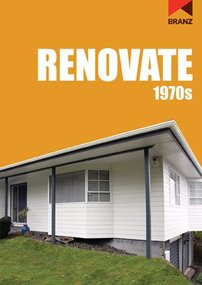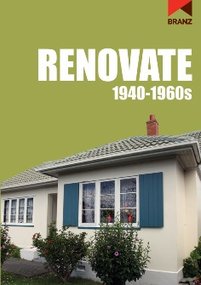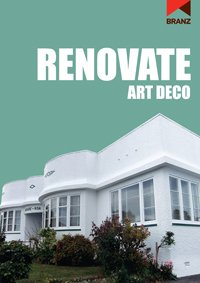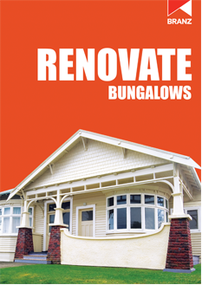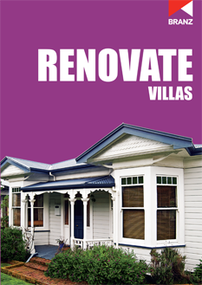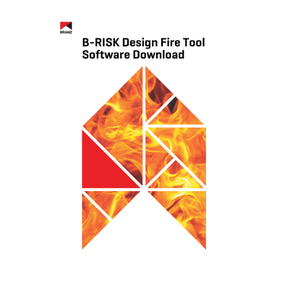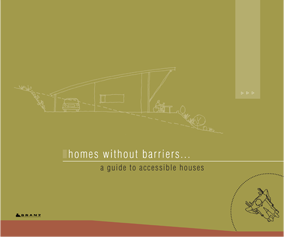Good Practice Guide: Long-run metal roofing (2nd edition)
Long-run profiled metal roofing is commonly used on a wide range of buildings, from houses to large warehouses and industrial buildings.
When correctly selected for the in-use environment, well detailed, well installed and well maintained, long-run metal roofing can provide years of trouble-free service. When poorly selected, detailed and constructed, metal roofs can cause major problems and require extensive maintenance during the life of the building.
This guide covers good roofing practice, detailing and materials and is aimed at designers and specifiers, roofing contractors, building contractors, building owners, building officials, and tutors and students in construction-related disciplines.
Disclaimer: Please note that our publications reflect the regulations and best practices on the date of release, which is shown on the publication. As regulations and industry standards evolve, we always recommend that our publications be read in conjunction with the latest building code clauses and standards.
Building Basics: Building Code compliance
Making sure that buildings comply with the New Zealand Building Code is a key part of design and construction, yet the process of demonstrating this can be an area of frustration. Building consent applications that don't have enough information that is relevant to the proposed work can cause delays and additional cost to a project.
This book has a focus on residential buildings and covers the steps a designer needs to follow to gather the documentation required and the different options to prove compliance with the performance requirements of the Code.
Note that a number of the documents that can be used to demonstrate compliance, such as acceptable solutions, have been updated since this book was published.
Disclaimer: Please note that our publications reflect the regulations and best practices on the date of release, which is shown on the publication. As regulations and industry standards evolve, we always recommend that our publications be read in conjunction with the latest building code clauses and standards.
Selecting timber (3rd edition)
This is a guide for specifying and choosing timber for use in New Zealand buildings, which will be useful to all architects and designers, specifiers and builders working with timber.
As well as covering such key issues as timber treatment and moisture levels, the book features an extensive species data index, with separate sheets for each of 89 species of timber available on the New Zealand market. The data sheets cover key characteristics of each species such as timber strength, hardness and durability, borer susceptibility and typical uses.
Selecting timber briefly covers engineered wood products, plywoods and veneers, looking at their general characteristics, but does not cover specific performance or selection data for these.
Disclaimer: Please note that our publications reflect the regulations and best practices on the date of release, which is shown on the publication. As regulations and industry standards evolve, we always recommend that our publications be read in conjunction with the latest building code clauses and standards.
House building guide (3rd edition)
This publication is a comprehensive, practical, step-by-step guide and is the ideal reference tool for anyone involved in house building. The easy-to-read format follows through all the key steps involved in house construction right from setting out the site to lining out.
This guide contains practical guidelines for good timber-framed house building, with hundreds of diagrams, easy to follow tables for quick reference and bullet points for easy reading. Informative illustrations show how all the elements fit together.
Note that since the publication of this book a number of Building Code Acceptable Solutions have been amended and new Acceptable Solutions developed.
Disclaimer: Please note that our publications reflect the regulations and best practices on the date of release, which is shown on the publication. As regulations and industry standards evolve, we always recommend that our publications be read in conjunction with the latest building code clauses and standards.
Renovate: 1970s
Over 279,000 houses were built in New Zealand in the 1970s, a time of expanding suburban development. Architectural styles developed during the 1950s and 1960s influenced mass housing, and a wide range of new materials was used. Split-level homes became common on sloping sites, and many houses included garaging for two cars, with internal access. Architect-designed houses introduced different window styles and rooflines as well as new linings and claddings.
Many houses from this era are little changed since construction. Typical renovation work includes updating kitchens and bathrooms and making improvements to energy efficiency through retrofitting thermal insulation and installing modern space heating systems.
This technical resource covers:
- exactly what defines 1970s style
- how these houses were constructed and with what materials
- modifications they may have had in the decades since they were built
- typical problems and suggested remedies.
This book also takes you through the issue of getting a consent for renovation work, looking at compliance paths and Alternative Solutions.
Disclaimer: Please note that our publications reflect the regulations and best practices on the date of release, which is shown on the publication. As regulations and industry standards evolve, we always recommend that our publications be read in conjunction with the latest building code clauses and standards.
Renovate: 1940-1960s
Through the 1940s, around 28% of new domestic building work was government-funded state housing. This figure fell to below 10% during the 1960s. This book covers both state and private housing in an era of considerable growth - 262,000 houses were built in the 1960s.
Early state houses may be plain, but they are regarded today as solidly constructed homes that are ideal for renovation. Architect-designed homes of the period introduced many lifestyle features still popular today, such as larger areas of glazing, good indoor/outdoor flow and open-plan layouts.
This technical resource covers:
- exactly what defines 1940-1960s style
- how these houses were constructed and with what materials
- typical modifications they have had in the decades since they were built
- typical problems and suggested remedies.
This book also works through the issue of getting a consent for renovation work, looking at compliance paths and Alternative Solutions. Very brief examples show compliance paths that could be used for renovations such as adding a first floor addition, adding a double-glazed window where there is currently no window and adding an extension to a stucco house.
Disclaimer: Please note that our publications reflect the regulations and best practices on the date of release, which is shown on the publication. As regulations and industry standards evolve, we always recommend that our publications be read in conjunction with the latest building code clauses and standards.
Renovate: Art deco
The art deco house of the 1930s was a dramatic change to the earlier villa and bungalow. A flat roof, stucco cladding, rounded corners and reduced decoration all contributed to art deco's distinctive style.
These houses are often bought for their style rather than performance. Their stucco cladding and very low-pitched roofs often had weathertightness problems, and without renovation, art deco houses can be cold to live in. Careful renovation can retain the popular style while improving performance and comfort.
This book covers:
- what defines art deco style
- how these houses were constructed, and with what materials
- typical modifications they have had in the decades since they were built
- problems that may be encountered and suggested remedies
- how to get a consent for renovation work, looking at compliance paths and Alternative Solutions
- project and construction planning.
Disclaimer: Please note that our publications reflect the regulations and best practices on the date of release, which is shown on the publication. As regulations and industry standards evolve, we always recommend that our publications be read in conjunction with the latest building code clauses and standards.
Renovate: Bungalows
Bungalows are the archetypal house of 1920s New Zealand. Builders and architects took ideas from the United States, Canada, India and even Japan and added their own features to create this popular and enduring style. The style is distinctive, with a deep porch, exposed rafter eaves, extended bargeboards and oriel windows. Many bungalows remain largely in their original form, and they are frequently subjects for renovation.
This technical resource looks at:
- what defines a bungalow style
- how they were constructed and with what materials
- the typical modifications they have had in the years since they were built
- typical problems and suggested remedies
- how to get a consent for renovation work, looking at compliance paths and Alternative Solutions
- project and construction planning.
Disclaimer: Please note that our publications reflect the regulations and best practices on the date of release, which is shown on the publication. As regulations and industry standards evolve, we always recommend that our publications be read in conjunction with the latest building code clauses and standards.
Renovate: Villas
Many of the country's 85,000 villas, built before World War 1, have already been upgraded and renovated to some extent. In their original state, they are typically cold in winter and draughty, their spaces have a poor relationship to sun and site and their service areas such as bathrooms are not well related to other rooms.
This book is well illustrated with crystal clear drawings showing typical construction methods for framing, roofing, windows and interior building elements. The workings of double hung sash windows alone are shown in six drawings and two photographs.
Typical building materials and construction methods, including match lining, lath and plaster, pressed metal and moulded timbers are explained.
Common problems are outlined, with options given on the appropriate repair or renovation.
Disclaimer: Please note that our publications reflect the regulations and best practices on the date of release, which is shown on the publication. As regulations and industry standards evolve, we always recommend that our publications be read in conjunction with the latest building code clauses and standards.
B-RISK - Design fire tool software download
Download the zip file, unzip and run the setup file to install. You may require administrator privileges for the installation. (Version B-RISK-2024-02 - OS Win64).
BRANZ and the University of Canterbury worked together to develop B-RISK from the BRANZFIRE deterministic fire model. This collaboration was funded by the Ministry of Business, Innovation and Employment and the Building Research Levy.
The continued support and maintenance of B-RISK is funded by the Building Research Levy.
B-RISK allows several features to be integrated within the design tool to simulate building fires such as:
- a design fire generator and item-to-item fire spread module allowing building contents to be randomly placed within a room and the overall rate of heat release to be determined
- a comprehensive sprinkler response module including operation of multiple heads and parameters for effectiveness and reliability of sprinkler systems
- Assignment of hold-open devices to doors and open/close vents using a range of trigger criteria
- Vent flows and smoke migration
- reliability of other systems such as smoke detectors, mechanical systems and passive elements such as doors
- C/VM2 user mode - useful for fire analysis required to be in compliance with the New Zealand Building Code
- visualisation of geometry and results using Smokeview software
- Monte Carlo multi-iteration sampling for probability/risk analysis
- the inclusion of various types of balcony spill plume relationships to facilitate the design of smoke management systems within buildings.
Homes without barriers: A guide to accessible houses
For most of us, the word 'home' means a place of comfort, a refuge, a place where we can be ourselves and relax. For people with disabilities or those growing older, home has a special importance because they are likely to spend more time there. But when physical barriers and poor design make that home difficult to live in, health, safety and happiness can be compromised.
Designing and adapting houses in a way that enables people to really live in their own home for longer makes sound economic as well as emotional sense. It will lessen dependency, lower the risk of accidents, reduce the cost to society and possibly even increase the resale value.
This guide is about houses that are not disabling. It was developed in conjunction with many people working in the health and disability fields. It is packed with diagrams and advice for building designers, builders, health professionals, homeowners and anyone involved in the design or alteration of houses for those with disabilities or the elderly.
Disclaimer: Please note that our publications reflect the regulations and best practices on the date of release, which is shown on the publication. As regulations and industry standards evolve, we always recommend that our publications be read in conjunction with the latest building code clauses and standards.






